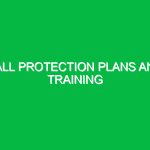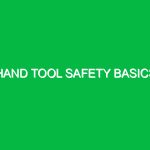Introduction to Fall Protection Equipment Inspection
Inspecting fall protection equipment is a critical aspect of the Health, Safety, and Environment (HSE) domain. This inspection process ensures that safety gear functions correctly, thereby reducing the risk of accidents in workplaces that involve height-related tasks. Falls are among the leading causes of workplace injuries, and often, the equipment designed to protect workers can be the difference between life and death. By maintaining a rigorous inspection routine, employers not only comply with regulatory requirements but also foster a culture of safety and accountability.
In my early years as a safety officer, I vividly recall a construction site where a simple oversight in inspecting a harness led to a near-fatal accident. The worker, equipped with a defective harness, fell from a scaffold. Thankfully, he survived, but the incident served as a stark reminder of the importance of diligent inspections. Such personal experiences underline the necessity of understanding what constitutes effective fall protection equipment and how to inspect it properly.
Understanding the Hazards and Risks
To grasp the importance of inspecting fall protection equipment, one must first comprehend the potential hazards associated with its use. The risks can vary widely, influenced by the work environment, the type of equipment used, and the specific tasks being performed.
Common Hazards Associated with Fall Protection Equipment
1. **Equipment Failure**: The most apparent risk is equipment failure. This can occur due to wear and tear, improper use, or manufacturing defects. For example, a fall arrest system may not deploy correctly if the harness is torn or the lanyard is frayed.
2. **Inadequate Training**: Workers may not know how to use fall protection equipment properly. A harness may fit poorly if the user is not trained to adjust it correctly. This poor fit can lead to dangerous situations during a fall.
3. **Environmental Factors**: Weather conditions such as rain, snow, or wind can affect the effectiveness of fall protection gear. Equipment exposed to these elements may degrade more quickly than anticipated.
4. **Improper Installation**: Fall protection systems must be installed correctly to function effectively. An improperly anchored lifeline, for example, can lead to catastrophic results.
5. **User Behavior**: Sometimes, the greatest risk comes from the user. Distracted or reckless behavior can lead to accidents, even if the equipment is in perfect condition.
Safety Precautions and Best Practices
To mitigate these hazards, it is essential to adopt a systematic approach to inspecting fall protection equipment. Below are actionable steps that can help ensure safety and compliance.
Develop an Inspection Schedule
Establishing a regular inspection schedule is paramount. This schedule should outline when inspections should occur, who is responsible for them, and what specific components need to be checked. For instance, daily inspections may be necessary for equipment used in high-risk environments, while monthly checks may suffice for less frequently used gear.
Conduct Visual Inspections
Before each use, a visual inspection should be performed. Look for obvious signs of damage, such as frayed straps, corroded metal parts, or signs of mildew on synthetic materials. A simple inspection can catch issues before they lead to accidents.
Perform Functional Tests
Beyond visual checks, functional tests are essential. For instance, ensure that the buckles on harnesses lock securely and that lanyards retract appropriately. Testing the equipment under controlled conditions can help identify hidden issues that may not be visible.
Document Findings
Keeping detailed records of inspections is crucial. Document any findings, repairs, or replacements made. This not only helps in tracking the condition of the equipment over time but also provides essential data during audits and inspections.
Training and Accountability
Regular training for workers on the proper use, inspection, and limitations of fall protection equipment is vital. Workers should understand how to inspect their gear and recognize when it is not safe to use. Additionally, assigning accountability for inspections to specific individuals can enhance compliance and ensure that inspections are taken seriously.
Regulatory Standards for Fall Protection Equipment Inspection
In the realm of HSE, various regulations govern the inspection and maintenance of fall protection equipment. Understanding these standards is essential for compliance and safety.
OSHA Regulations
In the United States, the Occupational Safety and Health Administration (OSHA) provides clear guidelines regarding fall protection. OSHA Standard 1926.501 outlines the requirements for fall protection in construction, mandating that employers ensure that employees are provided with appropriate fall protection systems and that these systems are regularly inspected.
ANSI Standards
The American National Standards Institute (ANSI) also plays a pivotal role in establishing standards for fall protection equipment. For example, ANSI Z359 outlines the requirements for personal fall arrest systems, including the necessity for regular inspections and maintenance.
ISO Standards
Internationally, the International Organization for Standardization (ISO) provides standards such as ISO 45001, which focuses on occupational health and safety management systems. Compliance with these standards not only enhances safety but also builds credibility with clients and stakeholders.
Conclusion
Inspecting fall protection equipment is not a mere formality; it is a fundamental component of workplace safety in the HSE domain. By understanding the associated hazards, implementing rigorous inspection protocols, and adhering to regulatory standards, organizations can protect their employees and significantly reduce the risk of accidents.
As someone who has witnessed the consequences of inadequate safety measures firsthand, I cannot stress enough the importance of diligence in this arena. Each inspection is an opportunity to safeguard lives, and a commitment to safety is a commitment to the well-being of every worker. Implementing robust inspection practices not only fulfills legal obligations but also fosters a culture of safety that resonates throughout the organization. In the end, a proactive approach to inspecting fall protection equipment is a reflection of an organization that values its most critical asset: its people.


